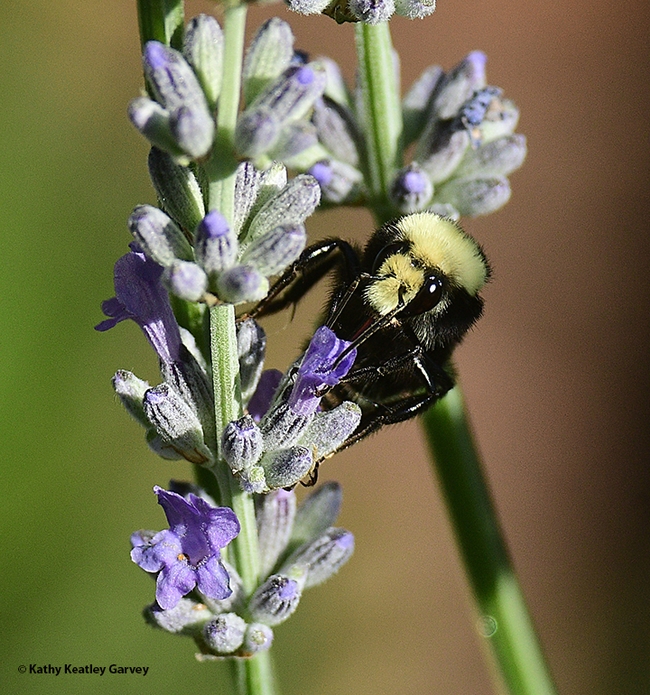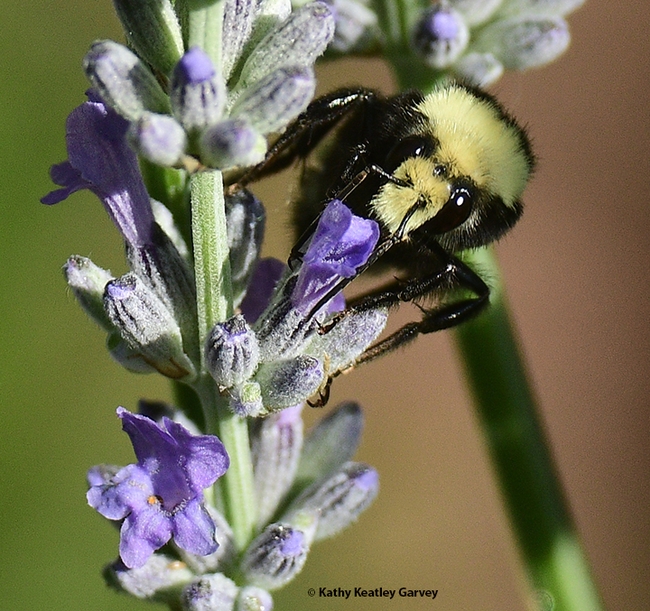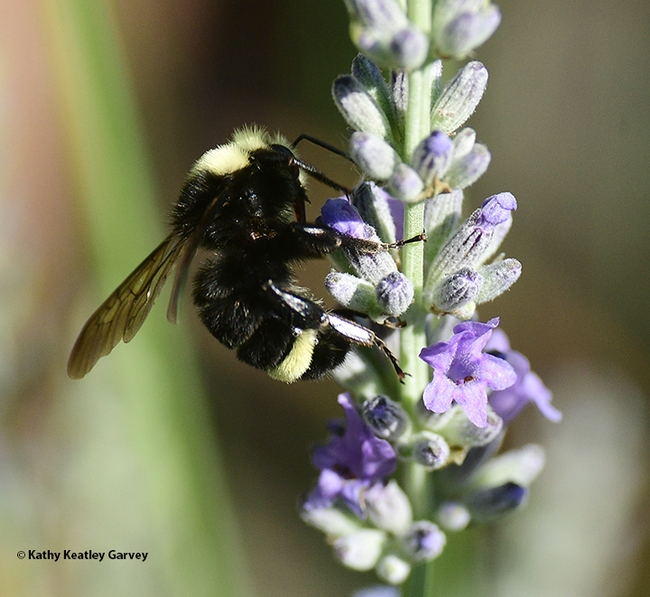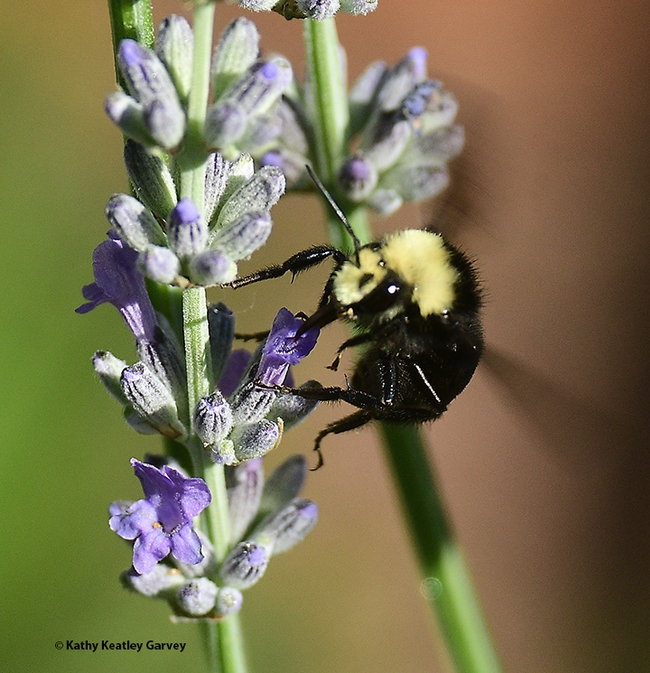The English lavender drew her in.
And there she was, a yellow-faced bumble bee, Bombus vosnesenskii, foraging in our family's pollinator garden in Vacaville.
She buzzed from blossom to blossom, ignoring the honey bees, syrphid flies and...the photographer.
Ms. Bumble Bee was on a morning mission--to gather as much nectar as quickly as possible and return to her colony.
Sadly, this year bumble bees in our pollinator garden seem to be as "scarce as hen's teeth." (Since hens have no teeth, hens' teeth are so scarce as to be non-existent!)
This Bombus arrived June 4 and we haven't seen any since.
“Bumble bees provide an important ecological service--pollination," native bee expert Robbin Thorp (1933-2019), UC Davis distinguished emeritus professor of entomology, told us. "This service is critical to reproduction of a huge diversity of plants that in turn provide shelter, food (seeds, fruits) to diverse wildlife. The potential cascade of effects from the removal of even one localized pollinator may affect us directly and indirectly.”
In his retirement, Professor Thorp co-authored Bumble Bees of North America: An Identification Guide (Princeton University, 2014) and California Bees and Blooms: A Guide for Gardeners and Naturalists (Heyday, 2014).
Attached Images:

A yellow-faced Bombus vosnesenskii, prepares to sip nectar from an English lavender. (Photo by Kathy Keatley Garvey)

The yellow-faced bumble bee, Bombus vosnesenskii, sipping nectar.(Photo by Kathy Keatley Garvey)

Side view of the yellow-faced bumble bee, Bombus vosnesenskii. (Photo by Kathy Keatley Garvey)

The yellow-faced bumble bee, Bombus vosnesenskii, departs. (Photo by Kathy Keatley Garvey)